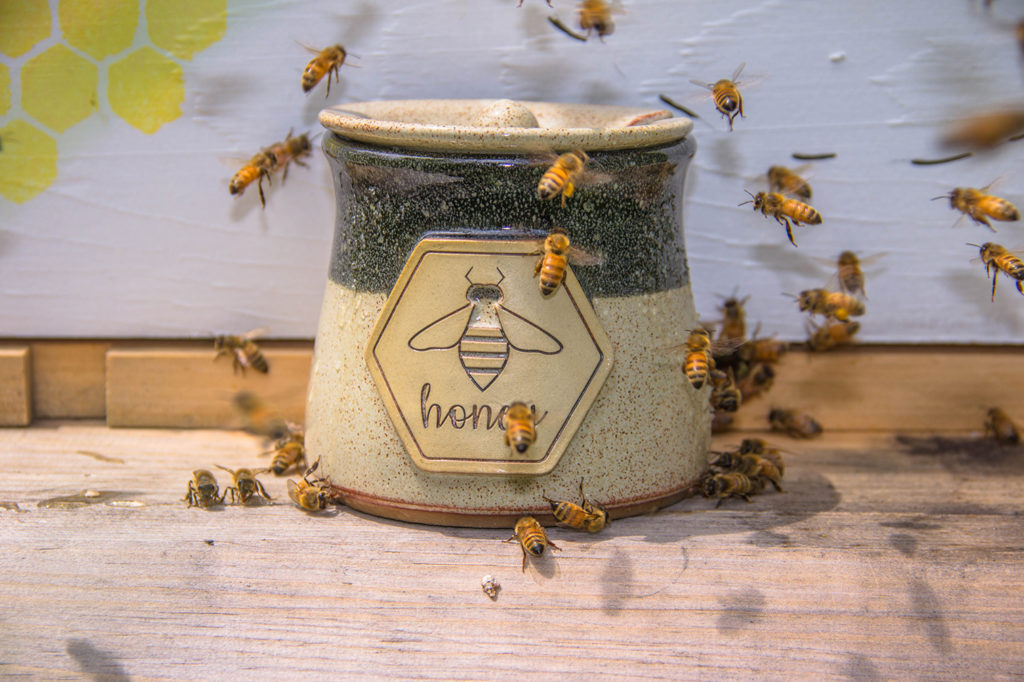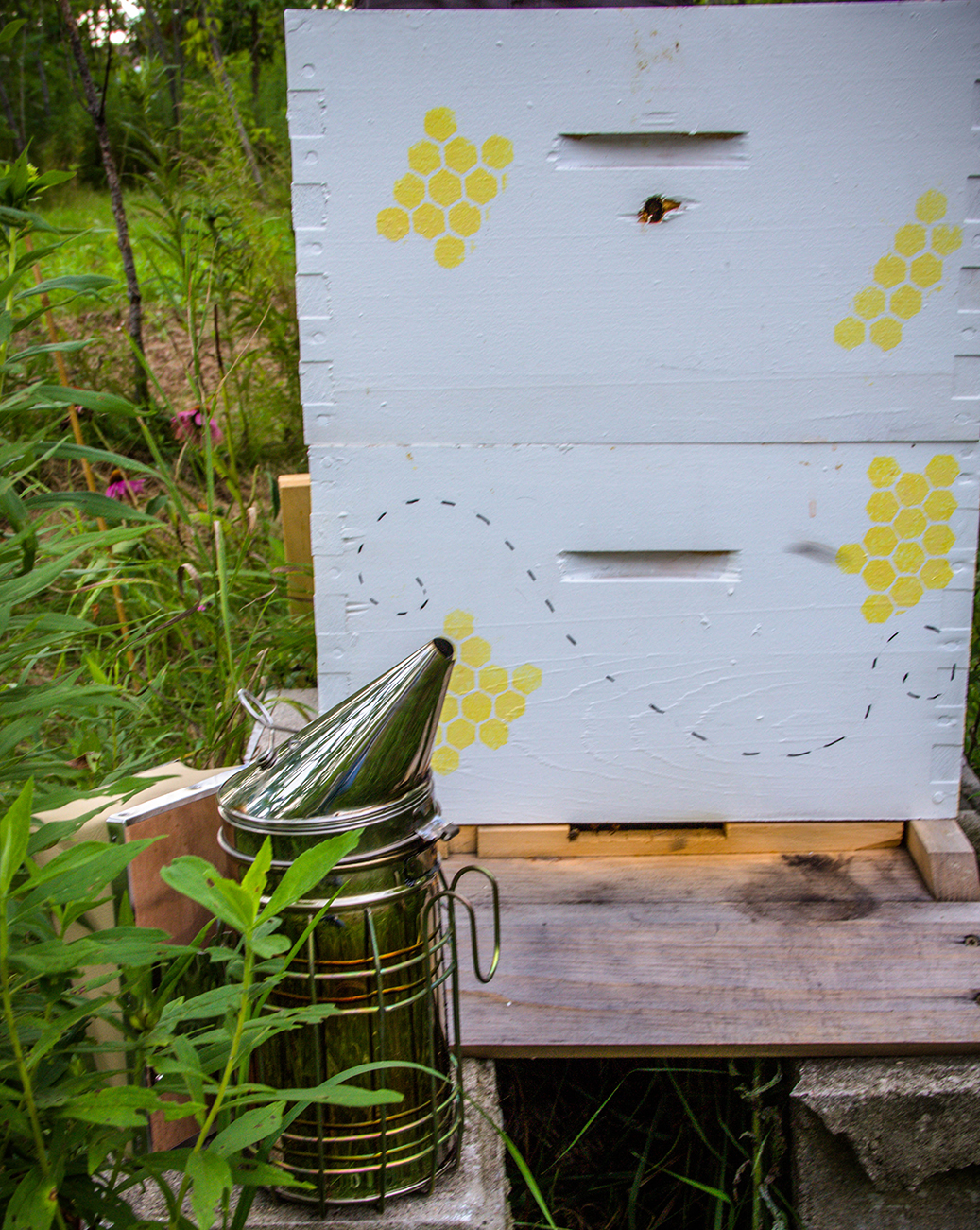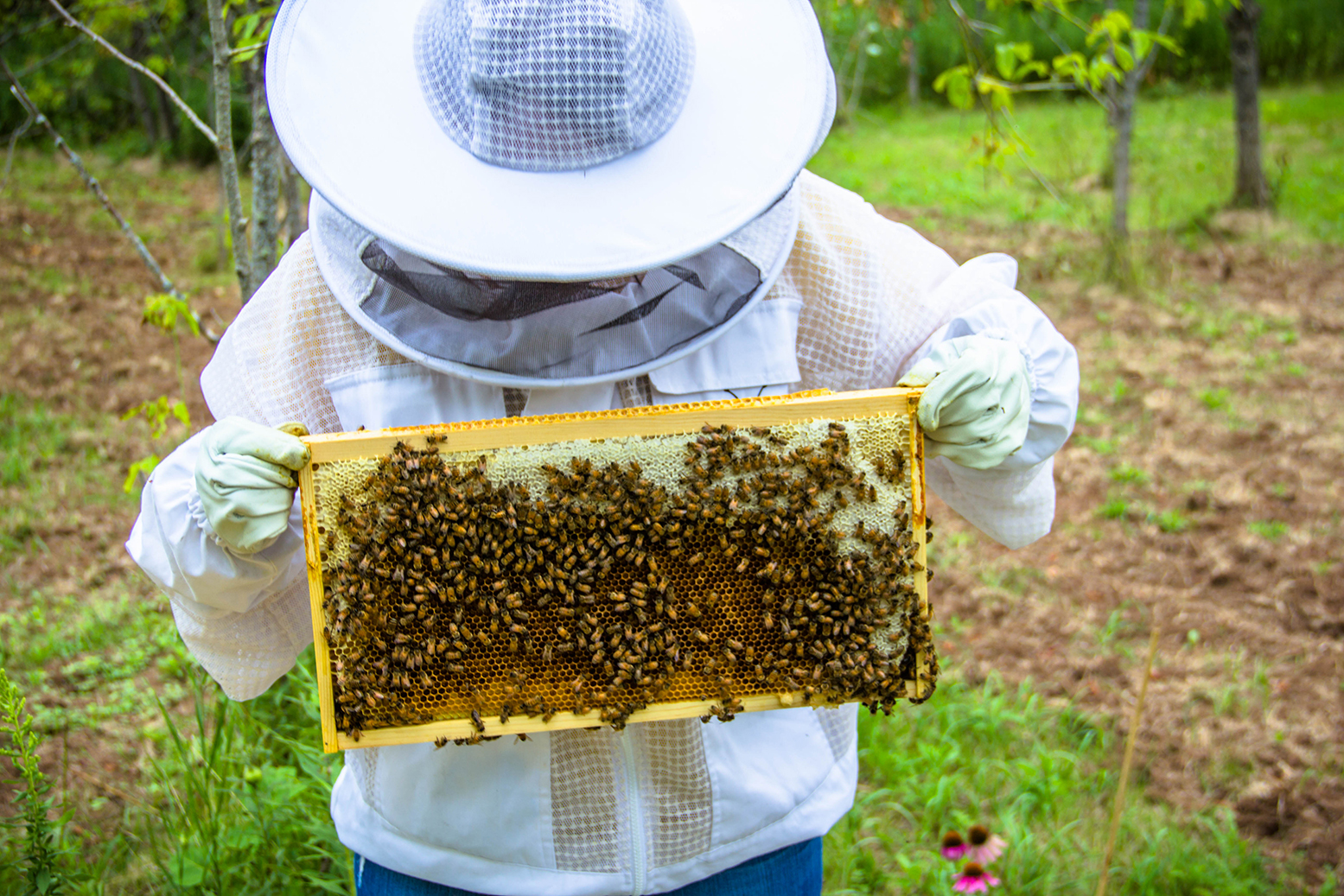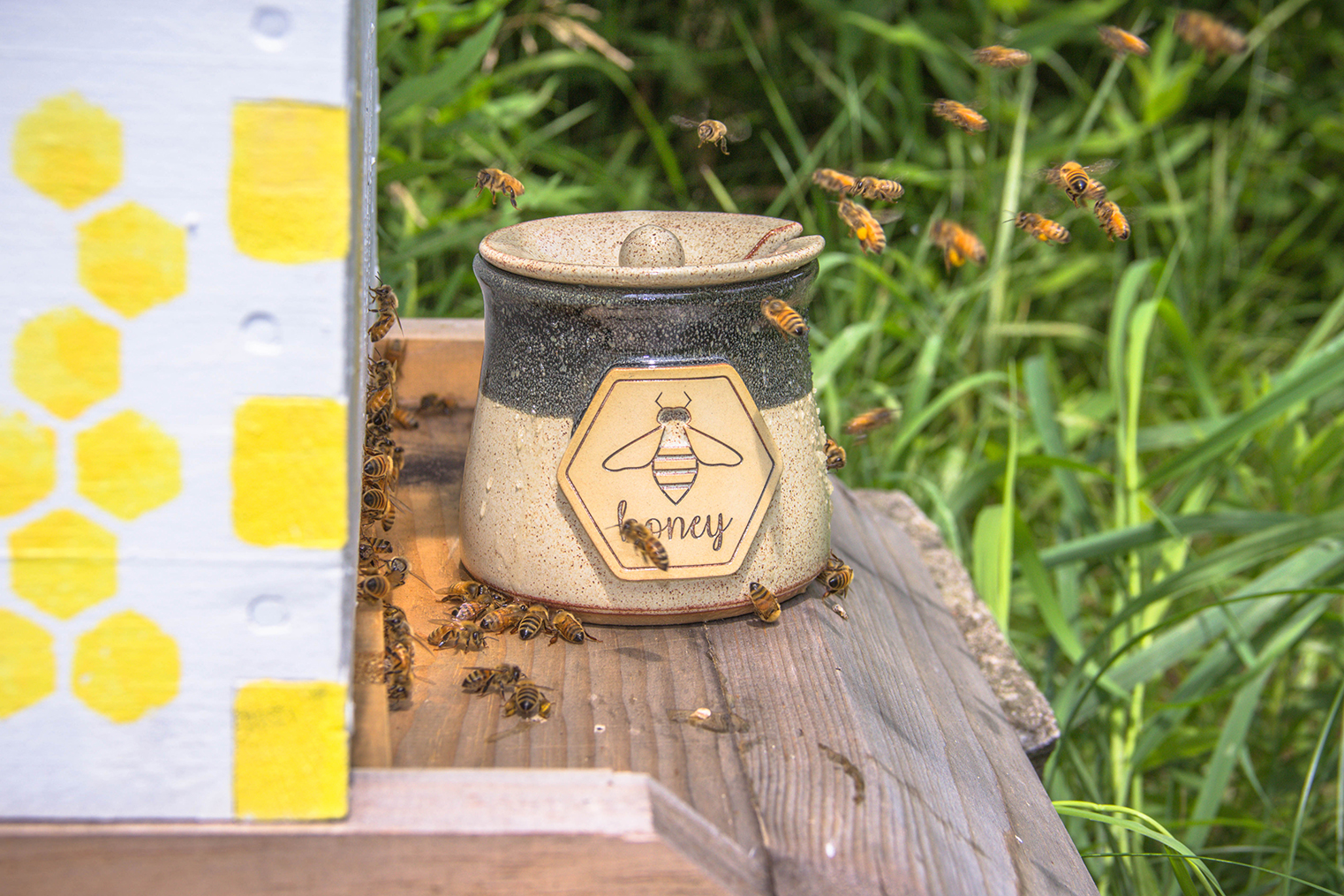
4 Beekeeping Tips for Beginners
Bees. They’re some of nature’s hardest workers. They’re also responsible for pollinating and making most of the plants we eat, including apples, blueberries, broccoli and more. That’s why beekeeping has been the buzz for environmentalists during the last few years. Because it’s a grassroots effort, beginners like to network with each other to get tips for beekeeping from each other.
At Sunset Hill Stoneware, we’re all about protecting the environment. We’ve talked about it a little before, but our passion for going green goes beyond what we do at work. Whether you’re taking up beekeeping yourself or just want to help bees, our graphic designer and part-time beekeeper Liz Babicky gave us some pointers to support nature’s best pollinators.
Give the Bees a Place to Live

Before you order your bees, make sure they have a place to stay. As with all real estate, there are three rules for setting up a hive: Location, location, location. The good news though is that bees can live in the country, the city and anywhere in between.
The direction from where your bees will fly matters, since bees always fly in the same direction out of the hive. Liz advises not pointing your hive toward your neighbor’s house, unless you have hedges or trees between your property. These guide the bees up and away from other houses. You also should avoid pointing it north.
Although Liz advises there are a few other styles of hives, the Langstroth design is the preferred style for beekeepers. The Langstroth features hanging frames, on which the bees build their comb. On the bottom of the hive, there’s an entrance the bees can use. It also features boxes where the queen bee and her workers live, plus boxes above where they store their honey.
These hives are more accessible than other styles and easier to inspect, according to Liz. With the box style, you can easily lift the frames to see how the bees are doing. It also gives them proper shelter. Langstroth hives are designed to protect bees during rainy days, and while they’re overwintering during colder months.
However, as easy as it is, checking on your bees frequently isn’t always the best idea. Some bees have better temperaments than others, and Liz has gentle bees. If your bees are testy, checking on them once a day could end with you getting stung. Instead, give them space and check on them every other week.
You should also give your bees a water source they can actually use. It’s one thing to set up your hive near a lake or your neighbor’s pool, but this isn’t a safe way for the bees to stay hydrated. In such a large body of water, they could drown if they don’t have a spot to rest while they drink.
Instead, set up a bee watering station. Bees can use a lot of popular setups that you’ll find online, even as simple as putting rocks or marbles in a bird bath for them to use. For her bees, Liz used a chicken fountain and added marbles to the bottom of it, keeping it near the hive. The watering station doesn’t need to be right next to the hive, but it’s important to have one either way so your bees have easy access to water.
Plants That Bees Love
The best tip for beekeeping is one that anybody can do, no matter where they live or whether they have their own beehive.

Not planning to raise your own hive? You can still plant flowers that bees love to give them something to eat and pollinate. Although bees aren’t particularly picky and will go to pretty much any flower they find, they have favorites. Liz says a good rule of thumb is to look for perennials that bloom all summer long.
Here are some of the plants bees love most, in no particular order:
- Coneflowers (also called echinacea)
- Sunflowers
- Poppies
- Lavender
- Rosemary
- Black-eyed Susan
- Honeysuckle
- Bee balm
There are plenty of herbs that both people and bees love, like mint, oregano, chives, sage and cilantro. On top of that, bees also like plants that most people would consider weeds. They love goldenrod and all types of flowering clover. Even if you can’t raise your own beehive, keeping a few of these and other plants around will help bees make honey that they (and you) can use for years to come.
Harvesting Honey
Honey needs to be harvested in the fall. In North America, bees don’t produce honey during the winter, even in warmer areas like Florida and California.
When you’re harvesting honey, using a bee smoker is your ticket to not getting stung if your bees are short-tempered. The smoker calms and dazes the bees, so they won’t attack and will stay out of your way. However, there’s more than one way to work with the bees for their honey. Liz notes that every beekeeper does things a little differently.
You should also be careful not to take too much honey from the bees. Harvesting before the bees are ready or taking too much will make them stop producing altogether for the year, which can make it even harder for them to survive in the winter.
Liz advises that you can only take honey from the top two boxes of your hive. The rest of the honey is what the bees eat during the winter and what the queen uses to lay her eggs. Luckily, since honey never expires, you can save what you harvest from your hives for months or years. It doesn’t even need to be refrigerated. You can store it in a sealed mason jar or serve it in a stoneware honey pot and it will be fine. Just be sure to store it where pests like ants and flies can’t get to it once you’re done using it with breakfast or baking.
Tips for Beekeeping in Winter
 As the saying goes, winter is coming. While bees are overall low-maintenance creatures, it’s not a good idea to just leave their hive outside unprepared during the winter. Just like you and your family, they need a way to stay warm when it’s below 40° Fahrenheit.
As the saying goes, winter is coming. While bees are overall low-maintenance creatures, it’s not a good idea to just leave their hive outside unprepared during the winter. Just like you and your family, they need a way to stay warm when it’s below 40° Fahrenheit.
Preparations for winter vary from beekeeper to beekeeper. However, pretty much every beekeeper will insulate their hives with hay or other materials to keep them warm. Some move the bees into a shelter to add another layer of protection from the elements. The key here is to make sure that the bees can still fly outside if they need to—after all, they still sometimes fly out in order to do their business and keep the hive as clean as they can.
The bees have their own preparations, too. Like a messy breakup, they kick out the male drones during the winter in order to save on food. They don’t have as many larvae either, so they can focus on staying warm all through the season. They’ve also stocked up on honey for this time of the year, so as long as you let them keep enough for themselves during the fall. The Honeybee Conservancy recommends leaving the bees with about 40-50 lbs. of honey for the winter.
As for Liz, she’s still weighing her options for overwintering her bees. Since she has a barn, she and her husband have considered putting their hive inside and leaving the barn door ajar so the bees can come and go as they please.
Whether you plan on beekeeping or not, bees need our support. Understanding what they need to survive and thrive will help both them and us in turn. While these tips for beekeeping only cover the basics, they can help you support and understand these little flying workers and how they make our world a better place.


[…] years. On the other hand, embroidery is a trend that can come and go. Shirts decorated with your beekeeping association’s logo might look great when you receive them, but they’ll look dated a few years […]